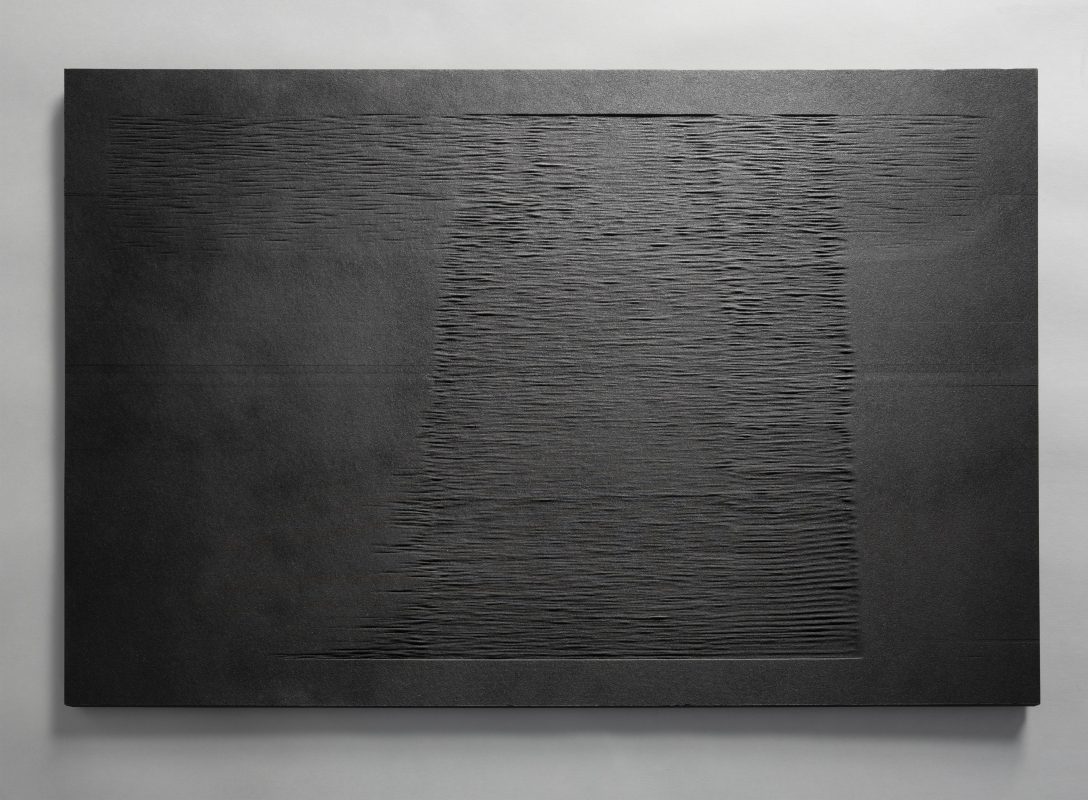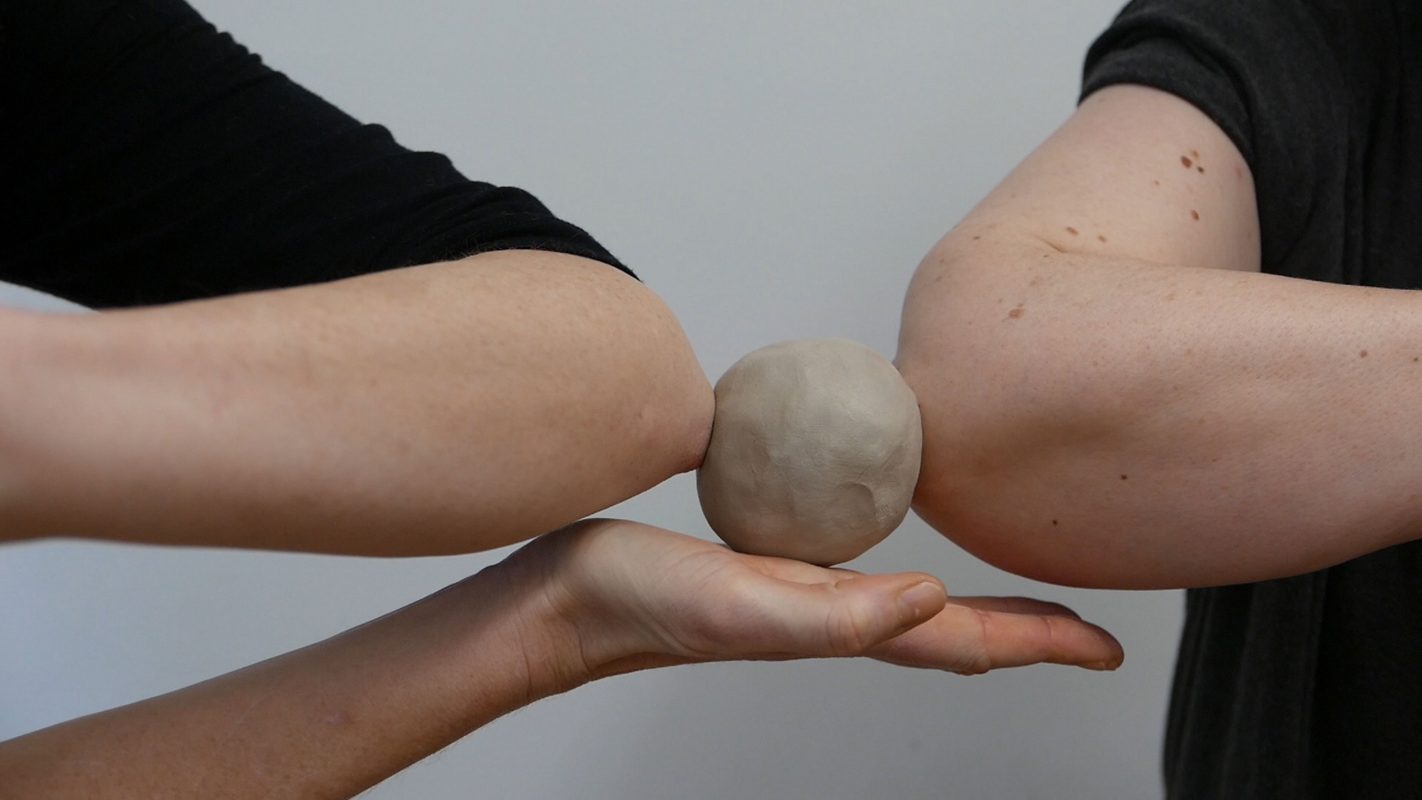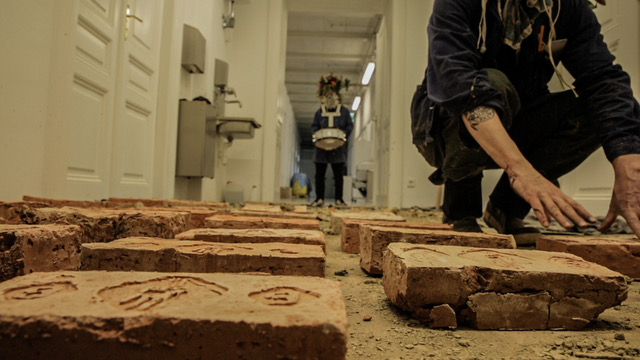Die Ausstellung zeigt 18 künstlerische Projekte, mit denen Studierende 2020/21 im künstlerischen Lehramt abgeschlossen haben. Darüber hinaus werden fünf BA-Projekte (unten mit * gekennzeichnet) zusätzlich auch im Kontext der Ausstellung „Play – The Octopus Programme“ vorgestellt. Das breite thematische wie mediale Spektrum der Arbeiten korrespondiert mit dem weit gespannten Curriculum und macht gleichzeitig sichtbar, wie sich Studierende mit ihren persönlichen Interessen darin verorten. Die Abteilungen kkp, dae und tex bieten im Hinblick auf künstlerische Medien wie Praxen vielfältige Grundlagen an, auf welchen Studierende mit individuellen Schwerpunktsetzungen aufbauen. Das kontinuierliche Einbeziehen kunst- und kulturwissenschaftlicher Perspektiven und Diskurse unterstützt und schärft das Reflexionsvermögen bezüglich künstlerischer Entscheidungen. Die neben den künstlerischen Projekten verfassten wissenschaftlichen BA- und MA-Arbeiten werden am Angewandte Festival im Channel Clayton vorgestellt.
Jakob Brandstätter: „Spielende Kinder“, Paul Buschnegg: „Imagine a concert about lost gardens in a wood-based future“, Selina Doller: „B.L.O.B. – Digitale Reduktion im realen Raum“, Nora Eckhart: „Next to normal“, Verena Faisst: „Rapsak rüf Ytrapretsnom“, Nargol Gharahshir*: „Zwischen zwei Alben“, Natascha Gerold: „Partizipative Aktion ‚gemeinsam formen‘, Ellenbogenabdrücke in Ton“, Lara Girotto: „Grenze und Entgrenzung“, Anna Grilc: „Jez-i-kati – absurder Raum Koroška/Kärnten“, Marie Groz: „Nous regarde“, Lisa-Marie Gruber: „Vorwärts LEBEN. NEBEL sträwkcür“, Julia Herzog: „To overdraw. Weiter ohne Text“, Milena Heussler: „Spielkartenanleitung für Thaiboxen im Kontext von queerfeministischen DIY Trainings“, Lisa Marie Piper: „Stellungswechsel“, Anna Sanglhuber*: „Blättern“, Maja Schrattenthaler: „Re-Vulvation – Das Dirndl als Leinwand“, Lydia Simon: „:innen“, Astrid Sodomka: „Intarsie“, David Heinzl*: „Körper“, Helene Eisl*: „Hokuspokus. Transsubstantiationsmoment und christologischer Moment in Manzonis Kunstverzehr-Aktion“, Pascale Ballieul*: „Making Kin With My Fictional Queer Ancestors: Being It Being They Being The Thing Being Frankenstein Being The Monster, or ‚Oh, Jesus Christ, Lucifer is a Faggot!‘“
Jakob Brandstätter, Kämpfende Kinder, 2020
Helene Eisl, „ES IST SO“, 2020
Natascha Gerold, What does an elbow feel like?, 2021
Ryan Mitchell Brick Bohemians: A Laboratory, Performance, Exhibition, and Film
In October of 2020 our laboratory began with the intention of creating one brick for every person who was “commandeered” by the Wienerberger Corporation to make the bricks that built the City of Vienna. Special access has been granted to the Winerburger quarry in Hennersdorf Lower Austria to collect the same clay used by the Brick Bohemians from the late 19th century. Of the between 3,000 and 8,000 (records are unclear) people indentured into servitude; we were able to make only 124 bricks over the course of 6 months. As our project continues to grow we will continue to get closer to the goal of making one brick for every Brick Bohemian.
Over the course of 6 months 11 processions (330 km traversed) from Die Angewandte to the quarry in Hennersdorf Lower Austria were held. Each of these travesals were led by lead artist Derrick Ryan Claude Mitchell and his companion animal. He has also been accompanied by a growing number of students and artists outside of the institution Die Angewandte who have joined the laboratory.




